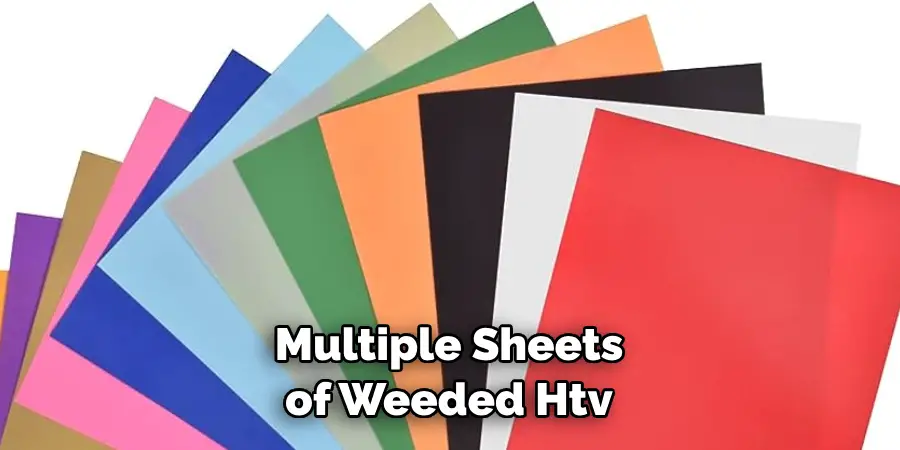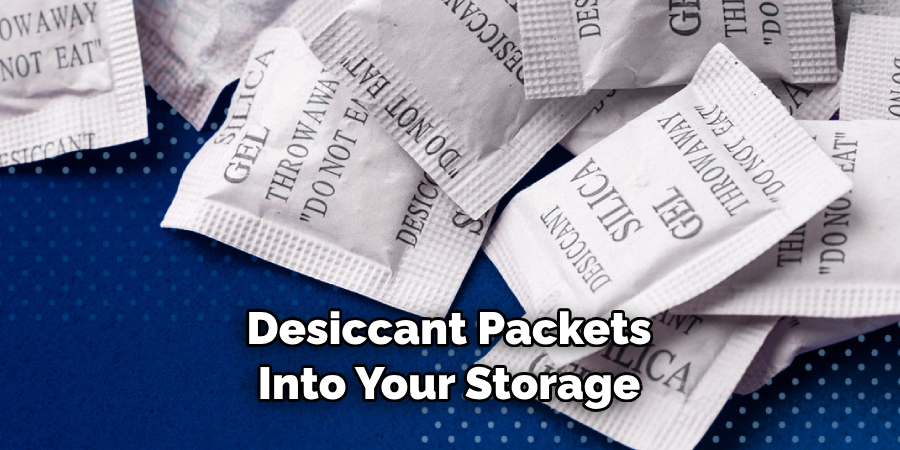Are you an avid crafter and vinyl enthusiast? If so, you know the importance of storing weed htv properly to extend the life of your project. Weed heat transfer vinyl (aka HTV) requires extra attention when it comes to storage as the material is sensitive and can become damaged easily if not stored in a climate-controlled environment without humidity.
In this blog post on how to store weeded htv, we’ll be discussing how to store weed htv including what items are necessary, where to store it safely, and tips for keeping it in optimal condition for longer periods of time. Read on if you’re ready to learn all about protecting your investment!

What is Weeded HTV?
Weeded Htv is a type of heat transfer vinyl that has been cut or “weeded” into a design. Heat transfer vinyl is a special type of plastic material that can be used to create custom designs on clothing and other fabric items. Weeding removes the excess material from around the design, leaving only the desired shape behind.
What You’ll Need to Store Weeded HTV?
Before storing your weeded htv, you’ll need a few essential items. An air-tight container is the most important item – this will keep out any dust or moisture and protect your designs from damage.
You’ll also want to purchase an acid-free archival sleeve or envelope for each piece of weeded htv that you will be storing. These sleeves are designed to protect against UV light, dust, and other environmental factors that could cause discoloration or degradation over time.
11 Step-by-step Guidelines on How to Store Weeded HTV
Step 1: Gather All of Your Materials
Make sure you have an acid-free archival sleeve for each item, as well as an airtight storage container. When choosing your container, make sure it is large enough to fit all of your designs and seal completely when closed. If you are storing multiple sheets of weeded HTV, consider purchasing a larger container that can fit them all in one place. This will help protect them from any potential damage.

Step 2: Clean Your HTV
Before you store your htv, you’ll need to make sure it’s clean. Gently wipe off any dirt or dust with a lint-free cloth and mild soap. It’s also important to make sure you remove any remaining adhesive from the backing of the HTV. This can be done with rubbing alcohol or a sticky remover spray.
But be sure to follow the instructions on the product you use, as some products may damage certain types of HTV. It’s also a good idea to let the HTV dry completely before moving on to the next step.
Step 3: Place Your HTV in the Sleeve
Place each piece of weeded htv into its own acid-free archival sleeve. Make sure the sides are sealed tightly to prevent any dust or moisture from getting inside. This will help protect the design from fading or becoming brittle over time. If you’re storing multiple sheets, make sure to label each sleeve so you can easily identify them when needed.
But be sure to avoid writing directly on the HTV as this could cause staining or smudging. It’s also a good idea to add a piece of cardboard or foam between multiple pieces of HTV in the same sleeve to prevent them from sticking together.
Step 4: Label Each Piece With a Description
Label each piece of weeded htv with a description that includes the date it was made, as well as any other pertinent information. This will help you keep track of your stored designs more easily.
It’s also a good idea to add the same description to the outside of each sleeve for easy reference. Although this step is optional, it’s highly recommended for those who store a large amount of weeded HTV.
Step 5: Place the Sealed Sleeves Into the Container
Once all of your pieces are labeled and sealed, place them into the airtight container. Make sure everything is snugly packed in and the lid closes securely. Otherwise, your HTV could be exposed to dust or moisture and suffer damage over time.

It’s also important to make sure the pieces are organized in a way that they don’t rub against or stick to each other. This will help preserve the integrity of each piece for longer. This step is especially important if you are storing multiple sheets of weeded HTV.
Step 6: Store Your HTV Away From Heat, Humidity, and Sunlight
Heat, humidity, and sunlight can all cause damage to weeded HTV over time. Make sure you store your container in a cool, dry place away from direct sunlight. If possible, it’s best to keep the container in a temperature-controlled environment such as a closet or drawer.
It’s also important to keep the container away from any strong odors or scents that could potentially stain your HTV. But be sure to avoid storing your HTV in the refrigerator or freezer, as this can cause condensation and make the material brittle.
Step 7: Avoid Storing Your HTV Near Chemicals
Chemicals such as chlorine bleach or paint thinner can also cause damage to weeded htv. Make sure your storage area is free from any harsh chemicals or fumes. It’s also important to keep your stored HTV away from any open flames, as this could cause discoloration or even melting. But be sure to keep an eye on your stored HTV, as conditions can change over time and cause unexpected damage.
Step 8: Place Desiccant Packets Into the Container
Desiccants are designed to absorb moisture in the air and help prevent mold growth. Place desiccant packets into your storage container to help keep the air dry and your htv safe. However, these desiccants will eventually need to be replaced after they’ve absorbed all of the moisture in the air.

Replace them every few months or whenever you notice they are no longer working effectively. It’s also a good idea to inspect your stored HTV periodically for any signs of damage.
Step 9: Check on Your HTV Regularly
It’s a good idea to check on your stored weeded HTV every few months. Make sure everything is still in good condition, as well as free from dirt or dust buildup. Otherwise, it’s a good idea to remove the pieces and give them a gentle cleaning before returning them to the storage container. This will help protect your designs from any potential damage over time.
Step 10: Replace Your Desiccant Packets When Necessary
Desiccants can become saturated over time, so make sure to replace them when necessary. This will help keep moisture levels low and protect your stored designs from damage. But be sure to always follow the directions on the product you use, as some products may require different replacements times.
Step 11: Enjoy!
Now that you know how to store weed HTV properly, you can enjoy crafting knowing that your designs are safe and secure! Store your HTV correctly and you’ll be able to enjoy it for many years to come. Always remember to check on your stored HTV periodically and replace desiccant packets when necessary. With the proper storage, you can make sure your designs stay looking their best!
We hope this blog post was helpful in teaching you how to store weeded Htv properly. If you have any questions or tips that we didn’t cover, please feel free to leave them in the comments below.
Frequently Asked Questions
Q: How Often Should I Check on My Stored Weeded Htv?
A: It’s a good idea to check on your stored designs every few months to make sure everything is in good condition and free from dirt or dust buildup. This will help ensure your designs stay in optimal condition for longer periods of time.
Q: Can I Store Weeded Htv in the Freezer?
A: No, we do not recommend storing weeded htv in the freezer as it can cause condensation which may damage your designs. It is best to store your htv in a cool, dry place away from direct sunlight.

Q: How Do I Clean Stored Weeded HTV?
A: You can use a lint-free cloth and mild soap to gently wipe off any dust or dirt from stored weeded htv. Make sure to dry it thoroughly afterward before storing again. It is not recommended to use any harsh cleaning products or solvents as these can damage the material.
Q: How Long Can Weeded HTV Last in Storage?
A: If stored properly, weeded htv can last for several years in storage. Be sure to check on your designs regularly and replace desiccant packets when necessary to ensure optimal longevity.
Tips for Storing Weeded HTV
To ensure that your designs remain in the best condition, it’s important to follow a few tips when storing weeded htv. Always store your weeded htv in an air-tight container and use archival sleeves or envelopes to protect each piece.
Make sure that the storage area is free from sunlight, moisture, and extreme temperatures, as these can cause discoloration or degradation over time. Finally, be sure to label all of your designs clearly so that you can easily find them when you need them.

Storing your weed htv correctly is essential to ensuring that your projects last for years to come. By following the tips and guidelines outlined in this blog post, you can rest assured that your designs will remain intact and vibrant for many years of crafting enjoyment.
Conclusion
We’ve now gone over the best ways to store your HTV, so now you’re ready to get crafting! Whether you plan on keeping only a few sheets of iron-on vinyl or want to store your ever-expanding collection, HTV is an enjoyable and versatile craft material that allows for endless possibilities.
Once you master the art of storing it correctly, you’ll have everything you need to start creating beautiful and durable projects whether it be wall art, clothing and accessories, or something else entirely.
Now that you know how to store your materials properly, consider trying out a different project like a rain gutter planter. With some old gutters and some plants of your choice, you can make a stunning vertical garden for your home or balcony.
Start small with one planter and see where it takes you, and who knows – maybe soon enough you’ll have the greenest balcony in town! Thanks for reading this article on how to store weeded htv.

